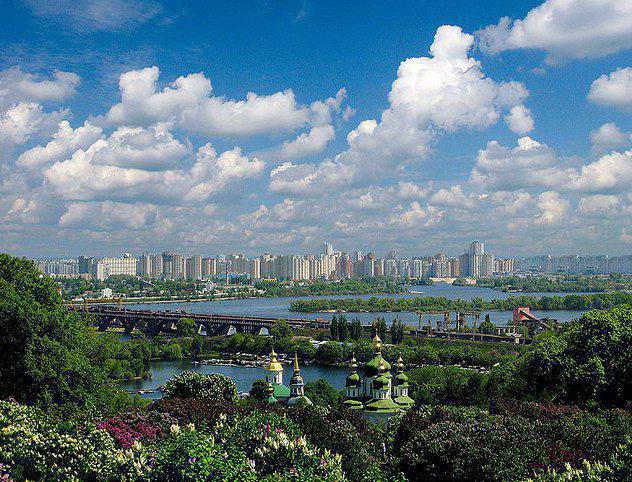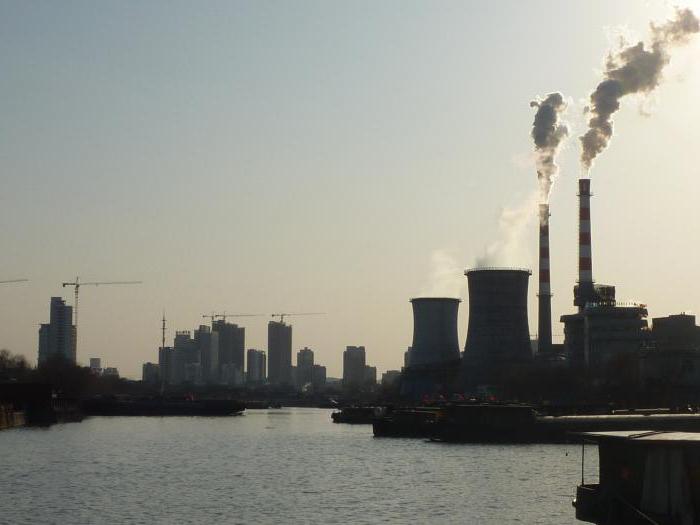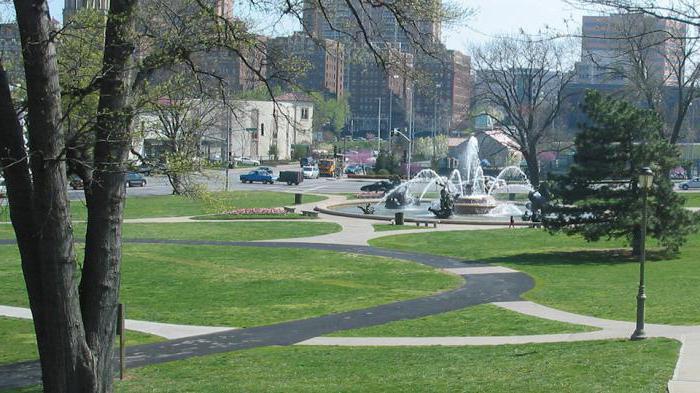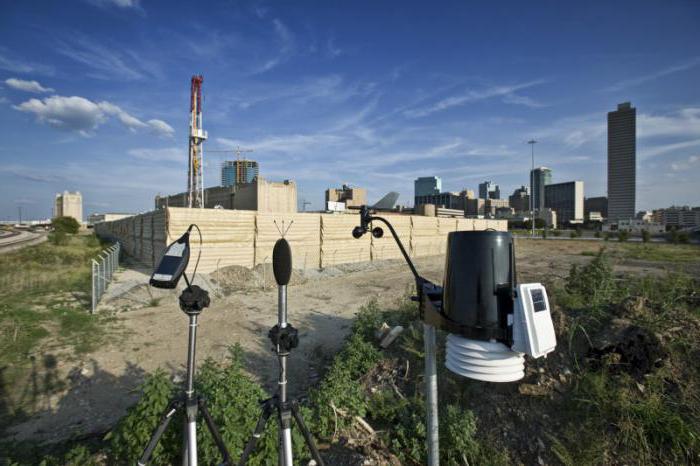The construction of cities is an old tradition, known since people began to unite in clans and clans to protect themselves and their territories. And if at the dawn of the history of the inhabitants of the Earth these were small villages that sprang up around a cult site and consisted of several huts and a stockade, then during the Ancient World and the Middle Ages these were already real cities, many of which are still alive.
Today there are multi-million megalopolises and even ghost towns, but, as in antiquity, divisions into residential territories are used for their construction. What is this, you can understand, referring to the origins of urban development.
The space of cities of antiquity
Judging by the excavations, then any division into streets, squares and alleys in the villages of 7-6 centuries BC. e. either did not exist at all, or they were spontaneous. For example, the Turkish city of Chatal-Huyuk, which existed at that time, was an integral residential complex of houses standing so close to each other that it seemed monolithic. People at the time of the construction of settlements were more concerned about safety than about beauty and comfort.
Ancient residential territories are a sign of a more developed culture that used the division of the city into social, religious and political areas, as was the case in the cities of Sumerian and Egyptian civilizations. The structure of cities and planning during their construction already provided for the intersection of streets and the formation of complementary architectural styles.
Starting from the archaic period, urban planning culture adhered to geometric shapes, in which a rectangle or square was most often used in forming the line of residential buildings. For example, residential territories (the definition in the 5th century BC had the name hippodane net) of the ancient Greeks were identical in all cities - an acropolis was built on a hill, and residential quarters, built in a square and separated by streets that converged on a public square, were located .

A similar grid has been used for many centuries and is suitable for settlements with a population of up to 50 thousand people. Such a layout was easy to adapt to the surrounding terrain, which the ancient architects skillfully used.
In the Middle Ages, the look of cities has changed radically. At first, residential buildings were erected spontaneously around the feudal castle or monastery, whose strong walls served as a refuge during danger, but then the circle expanded, new walls were built, beyond which there was another landing. Such cities as Paris, Vienna, Milan, Moscow and others look like, and the method of such urban development itself was called radial-ring.
City territory structure
Unlike ancient settlements, modern urban development is carried out according to a clear plan that provides for all the needs of the population. Residential territories are zones into which a modern settlement is divided, regardless of its size.
For example, in large cities and megacities there is a division into housing estates, which, in turn, are divided into districts and microdistricts. Together they create a single territorial and administrative unit of a settlement. Highways or natural zones separate the neighborhoods, and public institutions unite. In medium-sized cities, residential territories are several residential areas, while in small towns there is only one.
When planning a modern city, its borders on natural relief are taken into account, as the builders of the ancient world did. For example, it can be a ravine, mountain, river or other natural obstacles. There are many cities that originated on one side of the river, but as the population grew, they also “captured” the other bank. For example, Kiev (Dnieper), Dusseldorf (Rhine), Bremen (Weser), Budapest (Danube).

The structure of a residential territory directly depends on its area. So in a megalopolis, such a zone is divided into several microdistricts, the total number of population in which can be from 150,000 to 250,000 people, which is equivalent to an average city.
Residential Location
Since the residential area is intended for the construction of residential neighborhoods, its location is determined by such signs as:
- distance from hazardous production and heavy industrial zone;
- the number of buildings and the distance between them;
- planned natural or artificial recreation area;
- the number of roads connecting microdistricts with each other and with the city center;
- climatic conditions, especially wind directions;
- direction of storm water.
Thus, the placement of residential territory should take into account even the rose of the winds. If the direction of air flow comes from the venting plant harmful substances, towards residential areas, this zone is unsuitable for their construction.

To avoid future problems, the category of the enterprise according to its sanitary characteristics should be taken into account and a green zone should be organized:
- from factories that pose a threat to human health, the distance to residential areas should be at least 1000 meters;
- with average hazard indicators, the green zone is 500 m;
- for less harmful enterprises - 300 m;
- completely harmless industrial companies can be located 100 m or even 50 m from the residential quarter.
All indicators should be carefully studied and taken into account so that residential areas are built in an optimally safe and comfortable place.
Architectural solutions for housing development
When the construction of the next microdistrict is planned in the city, a compositional idea is formed, which manifests itself in the architecture of its cultural and administrative center. This is a kind of "skeleton" of the residential territory of the city, based on cultural objects, kindergartens and schools, government buildings, trade and sports facilities.
Residential quarters are located so that every resident of the microdistrict can easily reach the desired place along internal driveways or pedestrian alleys. It is important not only which shops, markets and other objects are included in the residential areas, but also in what architectural style they are built.

A professional approach is when taking into account the historical flavor of the city and the natural features of the surrounding area. In order to take into account all the nuances and make the new district fit into the city-wide ensemble, one should start from its general plan.
The development and proximity of highways also affects the development of a housing estate. Since any microdistrict is a closed system located on a certain plot of land, it is necessary to calculate in advance what maximum number of houses and what number of storeys can be located here. When the established norms are violated, there are buildings that are popularly called dysfunctional - they are either built near roads or near industrial enterprises.
Calculation of the needs of a residential neighborhood
The total area of the city is divided into several zones, each of which corresponds to its place and size of the land:
- Residential territories are residential areas divided into districts or quarters with residential, cultural, scientific and administrative buildings;
- the industrial zone is designed to accommodate production buildings and related experimental, warehouse and other facilities;
- landscape and recreational territory includes urban forests, parks, ponds and farmland.

To calculate how much space is needed, 1000 inhabitants are taken as a basis:
- for settlements with houses on average 3 floors and without personal plots - this is 10 hectares;
- for the same settlements, but with personal plots - 20 ha per 1000 people;
- in cities where houses have an average of 4 to 8 floors - 8 ha;
- in settlements with a number of storeys from 9 and above - it is 7 hectares per 1000 inhabitants.
When a new housing estate is laid, then the calculation of the residential area is made taking into account two categories:
- quarter (microdistrict) - occupies from 10 to 50-60 hectares, with 5 to 25 thousand people living in it, and in which the main institutions and enterprises for cultural and public services for the population are located, located within a radius of 500 m;
- residential area - includes neighborhoods and has an area of 80 to 250 hectares, within which are objects of urban importance and various institutions within a radius of 1,500 m.
Thus, calculations are made of the number of quarters (microdistricts) with a certain amount of population for each housing estate.
Noise Study Conditions
In addition to the direction of the winds, the noise level plays an important role in the construction of the microdistrict. It is divided into permanent and temporary (intermittent or oscillating). Methods for measuring noise in a residential area are to study its strength using special equipment.

To obtain accurate data, the following conditions must be met:
- noise testing in residential and public buildings is carried out in the daytime for 8 hours without a break, and at night - at least half an hour in each of the most noisy periods;
- the measurement duration directly depends on the nature of the sound;
- to find out the strength of temporary noise, you should determine its peak and study it for at least 30 minutes;
As for intermittent noise, before measuring its intensity, you need to calculate at what intervals it continues and record their fluctuations in the daytime and nighttime. When checking in residential and public buildings, the equipment should be 1 m from the walls and 1.5 m from the windows and at a distance of 1.2-1.5 m from the floor level. For more accurate data, all windows and doors should be closed in the room.
Measurement process
In addition to premises, noise measurement in a residential area must be carried out:
- in places of public rest;
- in parks and squares;
- on playgrounds in the yards, kindergarten and school;
- in the territory of hospitals and sanatoriums.
It is important that the measurements are carried out at the same points in the territory during the day and night, while there should not be any electromagnetic emitters nearby, which can affect the performance of the equipment. It is also impossible to carry out calculations during precipitation and if the wind speed is above 2 m / s.
Accurate are considered calculations in which:
- the microphone was directed towards the main source of noise and was not less than half a meter from the operator who carried out the measurement;
- the sound level meter switch must be set in accordance with the type of sound being studied — intermittent and constant — in the “slow” position, with fluctuating noises — at the “fast” and “pulse” mark if the source is impulsive;
- the average performance of the device is taken into account if the sound is constant or intermittent;
- when pulsed and oscillating - from the moment of counting.
All indicators of the device are brought together for a period of continuous measurement and are checked with a table of norms of permissible noise. If they do not meet the required indicator, work must be done to eliminate or reduce it. In residential areas, for example, it may be the planting of additional green spaces.
Calculation of rainfall runoff
In addition to winds and noise, an important role in the improvement of residential areas is played by the amount of precipitation. The measurement and study of surface runoff from residential areas made in advance will make the residential area safe, since they are often the cause of environmental pollution by various impurities.
To learn about the components of storm flows, take samples of rain and melt water. Surface drains entering municipal and rain sewers from the territories of enterprises are also subject to verification. By law, all wastewater from industrial areas to the city drainage system must be treated to a level that is safe for human health.

All calculations are made for the design and installation of sewer systems in residential areas. Such measures should also be provided, such as:
- cleaning not only the residential area, but also industrial sites, whose surface runoff can enter the urban system;
- regular inspection and repair of road surfaces that may be affected by storm or melt water;
- the use of borders in green areas through which drains can pass to prevent soil washing off.
Such a system of measures should apply not only to storm drains, which threaten pollution of residential areas, but also due to air conditions, especially in areas close to highways.
Needs calculation
To understand what a residential territory is, you should know that this is not only residential areas, but also the life support system of the people living in them. A microdistrict is considered to be well-maintained only when all the necessary services for servicing a person’s everyday life and leisure are located in close proximity to his housing.
These include shops, pharmacies, kindergartens and schools, homes, cinemas and other institutions. The needs of each residential area should be designed so that all these objects are located at a distance of 50 m to 200 m from residential buildings. The most convenient way of serving the population today is a stepwise one. It provides that the full range of services is available to all residents of the array.
Step service
All institutions in the housing estate are built at a distance from each other, each at its own level of remoteness.
For example, institutions of everyday life, school and preschool education, shops and pharmacies are located in close proximity to residential buildings - this is 1 step.
Objects of culture and sports, as well as public recreation areas should be removed at a distance of 300 m to 500 m (the second section of the housing estate), while bazaars, hospitals and administrative buildings should be concentrated in a place that can be reached by public transport 3-5 stops is the third step.








